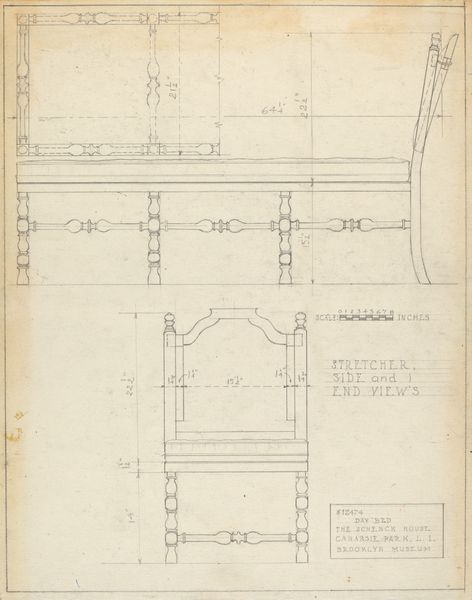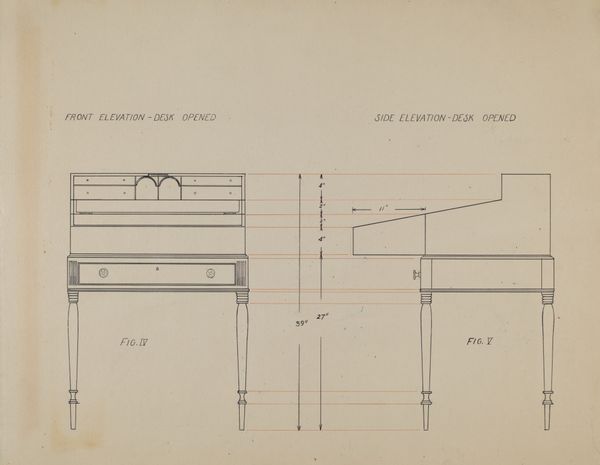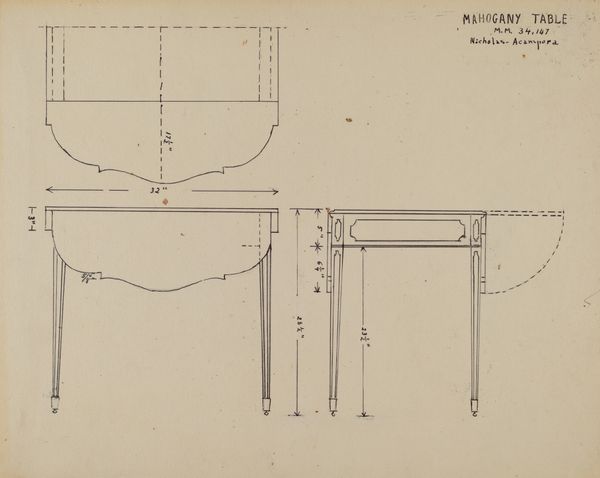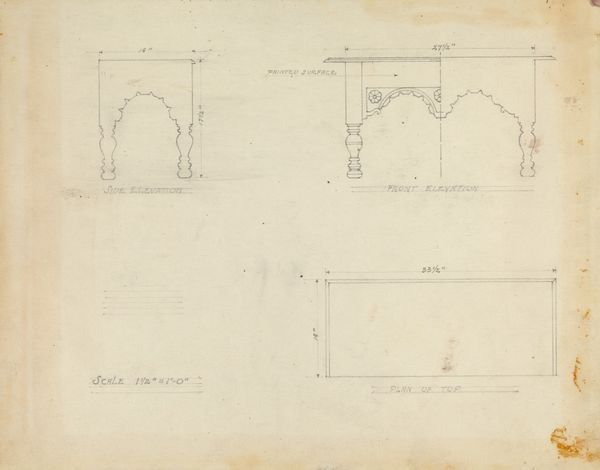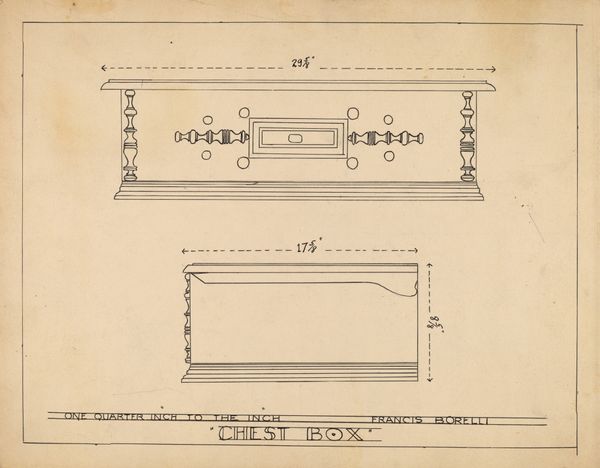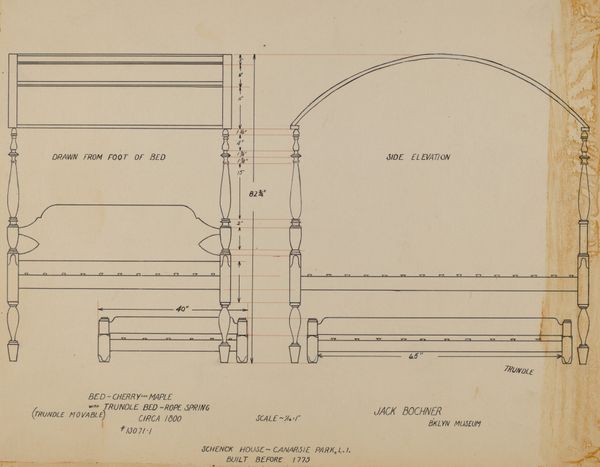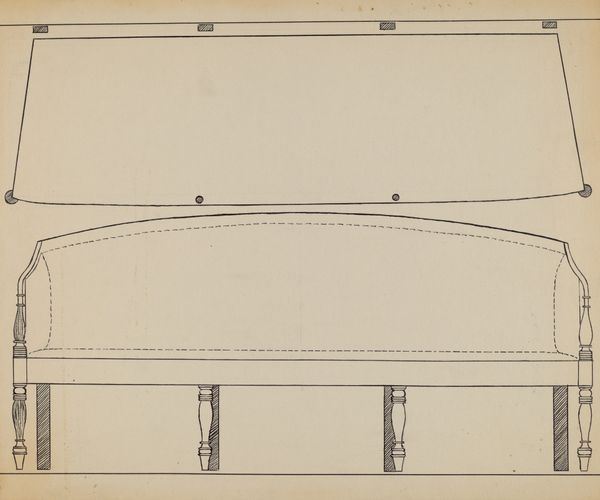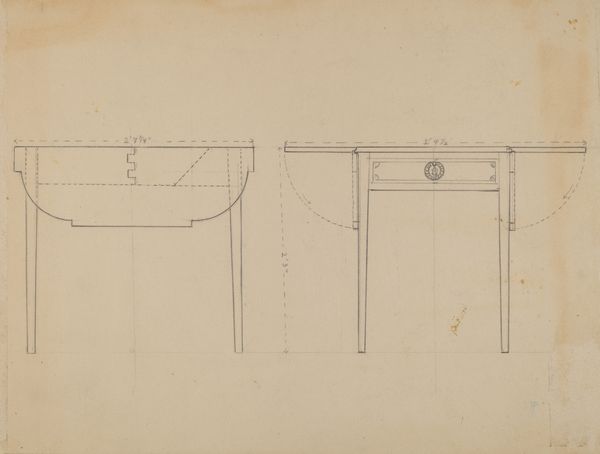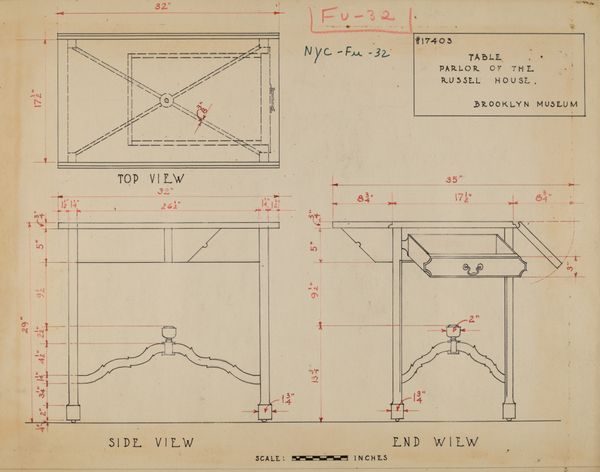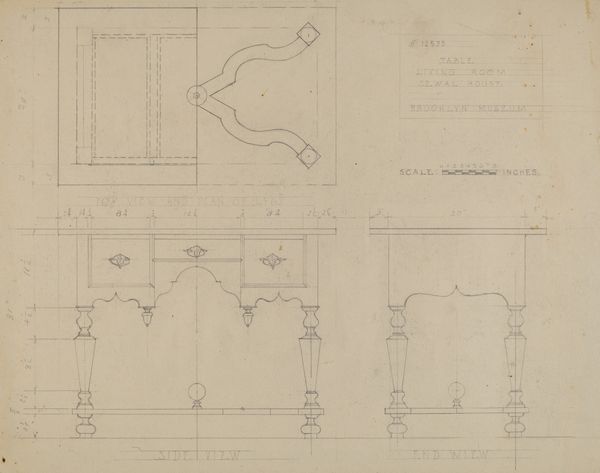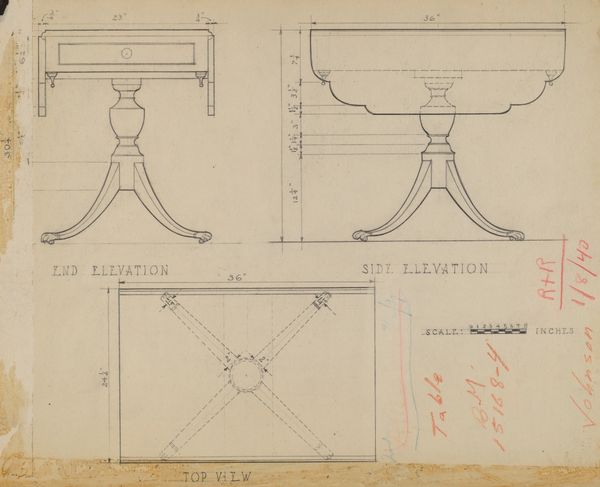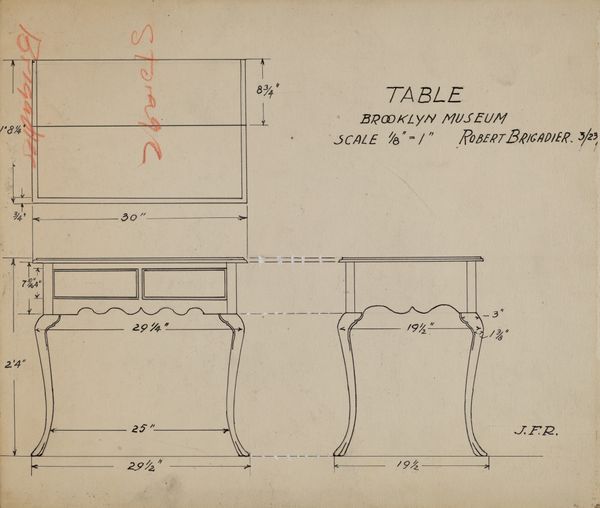
drawing, paper
#
drawing
#
paper
#
geometric
#
academic-art
Dimensions: overall: 22.8 x 29.2 cm (9 x 11 1/2 in.) Original IAD Object: 40 1/2"high; 76"long; 29" maximum width
Copyright: National Gallery of Art: CC0 1.0
Curator: Here we have a drawing entitled "Side Board," likely conceived between 1935 and 1942. It appears to be a design blueprint, rendered on paper. Editor: My first impression? It evokes a sense of precision. The meticulous linework and calculated dimensions emphasize functionality over aesthetic flair, and perhaps that is exactly the intention. Curator: Precisely. Observe how the drawing is laid out. It's a study in orthogonal projection – presenting the object from multiple viewpoints to comprehensively define its form in two dimensions. The careful annotations of measurements and scale serve to emphasize a complete understanding of volume and proportion through representation. Editor: Beyond its technical function, doesn't this diagram hold deeper symbolism? Furniture, especially a sideboard, has always been a central part of domestic life, right? Think about the connotations around home, sustenance, family—and also class. The fact that this piece is intended to be constructed from mahogany speaks to that sense of affluence. Curator: Symbolism is interesting to consider but let's also examine how the artist orchestrates visual planes. Notice the stark contrast of curved and straight lines and also how they contribute to the functional harmony, like that subtle interplay gives the drawing a distinctive modernist geometry. Editor: Modernist yes, but within it you've got traditional elements still playing out in new forms. Sideboards evoke that sense of familial ritual, something which, in the '30s and '40s was still strongly anchored in collective memory despite the changing artistic currents of the time. This suggests, in turn, ideas about how cultural memory itself, when represented graphically, transcends functionality. Curator: Ultimately, the image allows for both of our positions. Its formal austerity invites rigorous analysis of line, space, and scale while its function inevitably opens pathways to considerations of cultural and social experience. Editor: Agreed. This drawing demonstrates that even seemingly technical plans can be rich tapestries of cultural information.
Comments
No comments
Be the first to comment and join the conversation on the ultimate creative platform.
